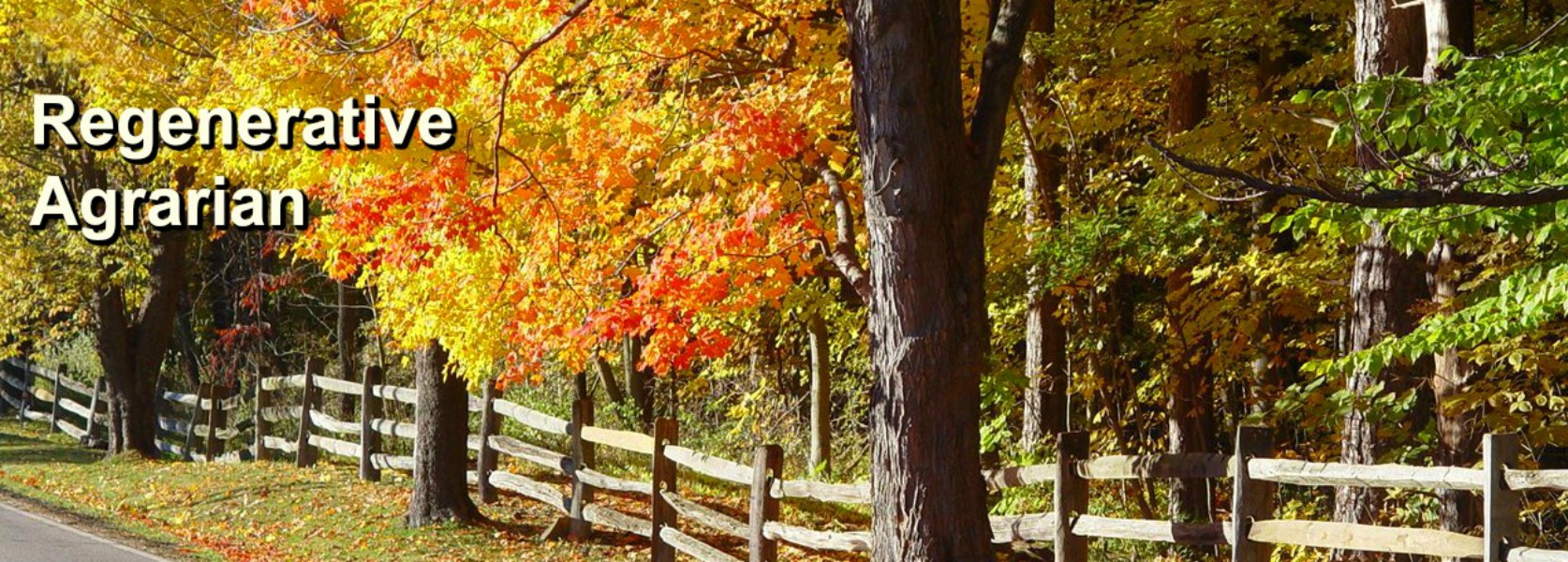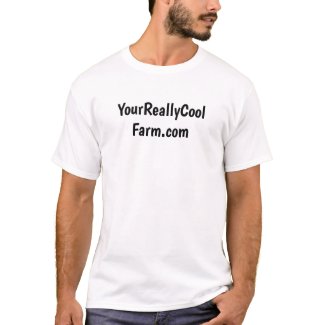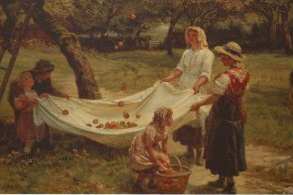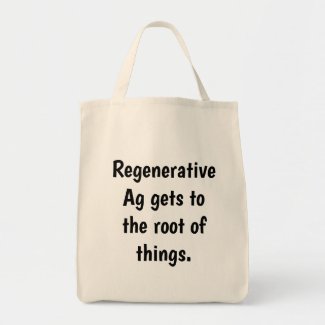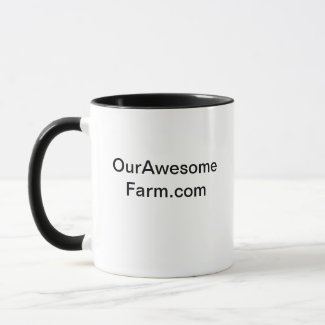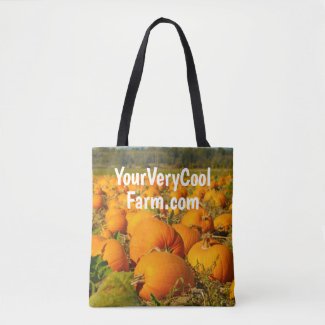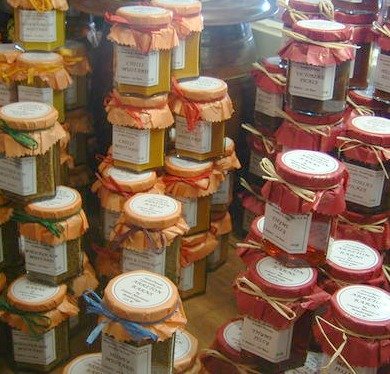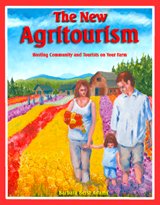Successful community orchards and food forests
© National Lilac Publishing, LLC. A version of this article by Barbara Berst Adams first appeared in Heirloom Gardening Magazine.
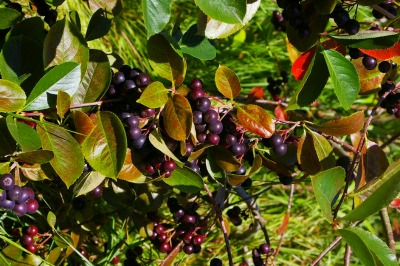 Aronia fruits
Aronia fruitsWith the growing popularity of community gardens, community orchards and food forests seem like a natural extension. For the sake of this article, “orchard” not only means a patch of fruit trees, but can also describe nut groves, vineyards, and areas of bramble or other fruiting plants with a permanent nature that take years to produce from initial young planting, and then produce year after year needing ongoing maintenance.
Guy K. Ames, NCAT
(National Center for Appropriate Technology) Horticulture Specialist and
author of “Community Orchards,” published by NCAT, has a specific
definition for one type of community orchard, “an orchard that is not being managed for private
profit and is cared for by some community of people.” But along with that, community orchards can be adapted to a for-profit project, such as an agritourism farm or a u-pick membership farm. For the latter, some traditional u-pick farms are changing over to membership only farms, where they know and trust the people who get the privilege of picking produce.
Beginnings of the community orchard movement
Nature was certainly the first community orchard. Surely it’s in our genetic tribal memory to harvest nearby fruits and nuts within the tribe’s territory as long as it didn’t overstep into another’s territory. In more modern times, Ames describes the community orchard movement as starting in England in the early 1990s with older privately owned orchards. The orchards were no longer being taken care of or were threatened by encroaching development. Citizen groups who wanted to preserve beautiful green space, older fruit varieties, local history and healthy eating gathered to find ways to save the orchards. These groups often raised money to lease or buy the orchard, then organized methods for ongoing care and harvest. Ames offers several examples of such groups the orchards are deeded or leased to. They include local municipalities, charitable trusts, food co-ops, housing project residents, or a “friends of the orchard” group.
The meaning of “community” when it comes to community orchards
The relative permanence of an orchard as compared to an annual herb and vegetable garden make the operation of community orchards different in many aspects than that of a community food garden. An orchard calls for care which can include pruning, thinning, ecologically sensitive disease control, weeding, soil fertility maintenance that doesn’t disrupt the plants’ permanent roots, plus protection from small pests and wildlife year-round. Because of this, some community orchards aren’t open to just anyone in the general public, but rather a specific community within the larger population.
As Ames explains, each of these communities determines who is included as part of the community orchard. A schoolyard might include the school staff, students and their parents. The community for orchards owned or maintained by food co-ops might include all co-op members, or perhaps specific ones who sign up ahead of time to be part of the harvest and maintenance work parties. Colleges, Native American reservations, and churches have established orchards for their communities. “There is one in St. Louis founded to serve international immigrants and refugees, one in Baltimore for abused women, and one in San Bernardino for troubled youth. Those are just a few examples,” states Ames in his publication, Community Orchards.
As another example, the Portland Fruit Tree Project in Oregon registers orchards and fruit trees in the Portland, Oregon area, and arranges for specifically chosen groups to show up for harvest gatherings at the sites. In general, half of the fruit harvested is given to local families in need through food banks, and the other half is taken by the volunteer harvesters. Owners of the fruit trees or orchards can choose to participate or not, and can also request that up to 25% of the harvest be left for them. Members not only hold harvest parties, but orchard care and work parties, bake sales to raise funds for the non-profit, and events that teach how to store fruit in cold cellars, pickle fruit, and make dried fruit and fruit leathers. They also do their best to keep the orchard and the landowner protected, seeing as though many of the registered fruit trees or orchards aren’t on publicly owned land. “All participants sign waivers of liability,” said Katy Kolker, executive director of the Portland Fruit Tree Project, “and harvest leaders give participants a thorough overview of safe harvesting practices at the start of each event.”
However, not all community orchards involve only already established orchards that started out private. Sometimes, new community orchards are planted. And, while they almost always have a specific group to care for them, not all are always banned from the general public.
One neighborhood in Seattle, Washington repurposed an old neighborhood dump site into a new neighborhood orchard that grows both Asian and European pears, Italian prunes, apples, kiwi fruit, blueberries, currants, blackberries and raspberries. It’s called Brandon Street Orchard. The neighborhood has regular work parties and harvest gatherings, and of course gather much of the fruit individually as it ripens. But the orchard isn’t closed to passersby. “There's generally been a superabundance of fruit,” said Dan Eder, spokesperson for Brandon Street Orchard. “Therefore, we haven't been too worried about who eats it. One year there was a problem with some neighborhood kids who seemed to be enjoying using apples as missiles. Nearby neighbors asked the kids to stop, and we haven't had the problem again.
“Apples have been abundant,” Eder said. “However, we use no sprays or pesticides, and apples on some trees are smaller with signs of apple maggot and scabs. They taste great, but they don't look so appealing. At the end of each growing season, we make a party out of gathering the remaining apples and have an on-site cider press that turns ugly fruit and beautiful fruit into spectacular cider. One of our neighbors (who's since moved away) was a home brewer who made vats of hard cider that we shared several months after harvest.
“The orchard also produces lots of Italian prunes - generally a problem of plenty. And there are thornless blackberries, currants, blueberries, and raspberries that come in at different times. We're happy when anyone comes and helps themselves. Folks have generally been good about taking only what they can eat and leaving lots for the next who wander by. Such grazing has often been an opportunity to meet new neighbors and invite them to the several weeding/maintenance work parties we have in spring and summer months.”
Crops for community orchards -- both old and new
When planning and planting a new community orchard, the long-term goals of the group will partially determine which fruits and nuts to plant. As well, so will the local climate, potential local pests, diseases and fruit-eating or tree damaging wildlife, and the soil and location of the planned orchard. Along with considering the overall climate of a region, the area of the new orchard may be in a micro climate depending on distant trees, the slope of the land, nearby buildings and so forth. New urban orchards should especially watch out for the possibility of future tall buildings cutting off needed sunshine, as orchards need plenty of sunlight.
Groups need to determine if they want to plant only crops that do well in the soil as it is without amendments or enhanced drainage, whether they want to deal with thorny fruit plants in future harvests and prunings, or if they want trees that grow tall enough to need ladders for pruning, thinning and harvesting. They will also want to decide if they prefer a single fruit that tends to ripen for harvest all at once so they can have a one-time harvest party, or do they want varieties that will spread the harvest out summer through late fall.
A diverse fruit and nut tree nursery catalogue can be a good place to start when making initial choices. Especially useful could be one that caters to the regional climate where the community orchard will be planted. Within the category of common fruits and nuts such as bramble fruits, filberts, walnuts, currants, blueberries, peaches, plums, grapes, pears and so forth, there are types best for certain climates, best for baking, best for fresh eating, and varieties within those categories that ripen earlier or later than most others of their particular variety.
There are blueberry varieties, for example, that grow especially well in the Pacific Northwest, as well as varieties that handle the South quite well. There are apples that need less of the required winter cold than most, and peaches naturally better immune to peach leaf curl that lurks in some regions of the country. Just the choices for apples alone are almost mind-boggling. Old English russets make superb apple cider and the flesh carries a gourmet flavor, yet the skins are rough like russet potatoes. Romas stay on the tree in some climates into November and make excellent Thanksgiving apple pie. There are apples with pink flesh, with cinnamon undertones, and those that store especially well all winter with flavor that mellows in storage.
But community orchards don’t have to restrict themselves to the common fruit and nut crops. Aronia berry (see photo at the beginning of this article), for example, produces an interesting fruit that looks somewhat like a very large smooth blueberry. Ames offers examples of other more unusual fruits that can work well for a community orchard such as persimmons, American pawpaws, and certain varieties of mulberry that provide sweet and tasty fruits.
When a community orchard consists of a preserved historic or older established orchard, the main fruit varieties are obviously already there and growing. But unless there’s a strict desire to maintain the exact historic look and feel of the orchard, even older community orchards can gradually expand or add to their varieties if desired. The edges of the orchard can be planted with lower growing brambles and bush fruits. If the trees are tall, lower growing nut trees such as filberts, which can tolerate some shade, can be planted in some areas of the orchard where they don’t interfere with the sun and space needed by the older fruit trees.
Customizable labels for your farm grown food product - Beautiful artisan designs, or start from scratch!
With grafting, established older fruit trees can also eventually produce other types of fruit on the same tree. But even well-maintained fruit trees have a life span. If an older orchard is getting close to the end of its production, replacement trees can be chosen and planted a few at a time each year, rather than eliminating the entire orchard and replanting all at once. Also, branches from older trees can be grafted onto newer trees. So in a way, if carefully planned, an older orchard never has to die.
Further thoughts on starting a new orchard
Community orchards have many of the same needs as private, homesteading, or commercial orchards. Besides the fact that fruit and nut varieties must grow well in the regional climate as well as the micro climate of the planned orchard, planting spaces and plant arrangement must take future harvesting into consideration. Would there need to be space for tractors with wagons to drive through certain areas for harvest? Where would orchard equipment -- if any were needed -- be stored, such as ladders, harvest buckets, and foliar feeding or drip irrigation equipment?
There are many aspects to operating a community orchard, and quite a few variations as well. But it’s hard not to sense these productive year-round food producers as being a little bit of Eden returning to the neighborhood, even if the occasional apple missiles must be dealt with.
-------------
RESOURCES:
“Community Orchards,” by Guy K. Ames
Published by NCAT
Available as free download or in print for very small fee at http://www.attra.ncat.org/ (search "community orchards"

